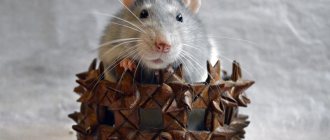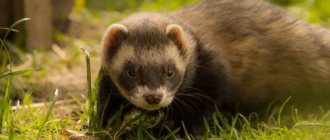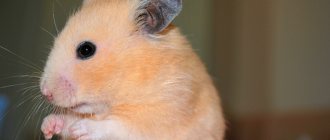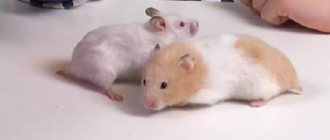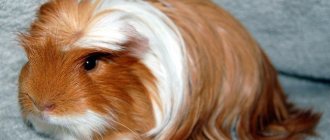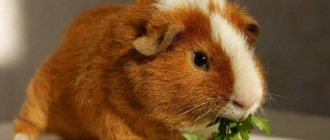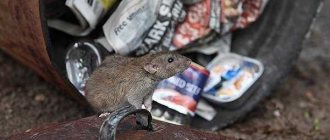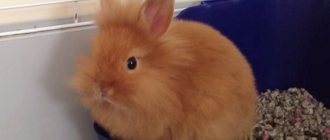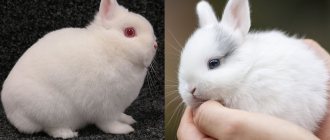The Corella parrot is perfect for home breeding. Beginning breeders are interested in all the nuances of keeping them: what to feed, where to place them, how to treat these good-natured birds. Against the background of everyday issues, a special moment stands out: how long do cockatiels live, because a feathered pet can become a true friend.
Corella parrot: description
Corella parrots have become known to lovers of our country quite recently. Despite this fact, these exotic birds are characterized as quite smart, original and low-problem in keeping.
Intelligence
These birds are deservedly included in the top ten most intelligent birds, which makes it possible to keep them in human conditions without any problems. As the experimental results show, the level of intelligence of this bird is comparable to the level of intelligence of a 5-year-old child.
Appearance and colors
Adult birds of this species grow up to 33 cm including the tail. The tail is quite long and pointed, and the head has a rather high crest. At the same time, the plumage of females and males has differences. Males are characterized by the presence of a brighter, defiant olive-gray shade, while the crest and head are distinguished by the presence of a yellow tint. The wings are more colored in velvet-black tones, with the presence of a bluish or silver color.
Interesting fact! The beak of this bird, both in appearance and in shape, is more reminiscent of the beak of a cockatoo, but at the same time does not differ in size, since it is significantly smaller in size. Despite this, the bird's beak is quite powerful and sharp, since the bird is able to bite through wire, such as electrical wiring.
As for the females, they are characterized by a dirty gray coloring of the main plumage, as well as the presence of a brownish tint on the underside of the body, while the cheeks are painted with spots of a pale brown tint. The head and the crest itself are pale gray with the presence of light yellow tones. The fact that young birds are more similar in color to females is considered characteristic. In this regard, only after a year can the gender of the birds be determined.
Subspecies of Corella parrot
Due to the fact that breeding such birds in captivity is simple, as a result of the work of specialists it was possible to obtain various shades of the birds’ plumage, which further complicated the process of determining the sex of the Corella parrot. The most famous subspecies are:
- The albino cockatiel is a bird with white or cream colored plumage with red eyes. This is due to the complete absence of coloring pigment. The head and crest are distinguished by their yellow color. The female may have pale yellow spots on her wings.
- The cockatiel is white with black eyes, the result of crossing a white female and a gray male. Males of this subspecies are distinguished by the presence of white feathers in the tail, while in females this part is marbled.
- The Lutino Corella is a yellow parrot with red eyes. On the sides of the head, regardless of gender, you can see characteristic bright orange spots.
- The cockatiel is light gray with black eyes. The subspecies was created by crossing a gray and a white parrot. The subspecies is distinguished by the presence of light gray shades in the tail.
- The cockatiel is dark yellowish , although there are subspecies with many variations of similar shades, ranging from dark yellowish to light cream.
Recently, the Corella Sheki bird has appeared, which is characterized by the presence of heterogeneous white spots on its plumage. Many experts believe that this subspecies can serve as a good basis for breeding new subspecies that are very original in color.
Interesting to know! The Sheki subspecies has quite interesting color variations: they can be pearl-gray, white-winged and black-winged, including a black-gray shade with a pure black chest.
Corella - All about the parrot species | Parrot species - Corella
Natural habitats
Being in their natural environment, these birds for their livelihoods choose forest plantations located in the coastal zone of reservoirs, as well as eucalyptus groves and thickets of shrubs located in the savannah. Numerous flocks can be seen on the tops of dried trees, as well as on tall bushes. The most numerous populations are observed in Australia.
Nutrition
Grains must be present in the parrot’s diet.
It is a balanced diet that will be the main guarantee of the excellent health of the nymphs and their life expectancy. The ideal option would be a ready-made grain mixture for cockatiels and similar parrots. Don't be alarmed that they contain a lot of grass, grains or other granules. They should be the basis (at least 65%) of nutrition.
If the main food consists of whole grains, this can cause complications on the liver. All grain feed contains too much fat, which can undermine the health of the bird. Additionally, the diet should contain fresh fruit or vegetables, cooked beans, sprouted grains - these are natural sources of trace elements, water and minerals. Be sure to install a special chalk in the cage, it will be a source of calcium. It is especially necessary for females.
There is a list of prohibited foods for cockatiels:
- Almost all heat-processed foods.
- Any sweet, spicy or fatty food.
- Mushrooms.
- Raw legumes.
- Onion.
- Avocado.
- Mango.
- Persimmon.
- Papaya.
- Bird cherry.
- Foliage from tomatoes.
- Chocolate.
- Alcohol-containing products.
- Caffeine-containing products.
Change the water daily, as this is what most often provokes diseases in cockatiels. It often contains leftover food or droppings, which are sources of proliferation of viral and fungal cultures. Remove all raw food after 3-4 hours and throw it away, even if the bird has not eaten. Such products spoil very quickly and become moldy. You should not give more than one slice of any fruit or vegetable.
Cockatiels eat heat-treated vegetables. The daily portion for one bird of all types of food is
40 grams. The only thing not included is greens, which can be enjoyed in any quantity. These are the greens that are familiar to us, such as parsley, celery, dill, lettuce and spinach, as well as sprouted grains, dandelion foliage, tree buds, clover, and nettles. Wood sticks are necessary and loved by cockatiels. These can be fruit trees, birch, pine, linden, spruce.
Introduce each new product gradually. You should not overwhelm your bird with unfamiliar foods. Firstly, this can give a negative reaction from the gastrointestinal tract (loose stools), and secondly, the pet may completely refuse unfamiliar food.
Keeping a Corella parrot at home
There are no difficulties in keeping a Corella parrot at home, so this process is accessible even to inexperienced lovers of keeping birds at home. Still, certain rules must be followed.
Cage structure
This bird likes its conditions to be as free as possible, so it will not feel comfortable in a cramped cage. In this case, you should pay attention to cells measuring 60x60 or 70x70 centimeters at least. At the same time, the door must be of such a size that the bird can freely fly out of the cage and return back.
Important to remember! Experienced bird owners recommend purchasing a cage that has larger vertical than horizontal dimensions. A cage of 60x50x50 cm is suitable for keeping one bird, and a rectangular cage with dimensions of 150x70x70 centimeters is suitable for two birds.
The cage is made of metal wire, but it should not have a paint coating. A retractable tray should be provided at the bottom of the cage. To avoid scattering of feed and splashing of water, some kind of sides should be built in the lower part, possibly made of plastic. The cage should be equipped with several perches, a feeder, a water container, and several toys.
Care and hygiene
Firstly, you need to choose the right place for the birds, since they are quite heat-loving birds. It is believed that they do not tolerate temperature changes well. As a result, the parrot may get sick or even die. Therefore, you should think about ensuring that there is no draft in the place where the birds are located, and the air temperature should be at the optimal level.
Interesting fact! According to the owners of Corella parrots, these birds are quite susceptible to foreign odors in the room, such as cigarette smoke, perfumes, disinfectants containing chlorine, including air fresheners.
The most optimal temperature for keeping a Corella parrot is from 22 to 24 degrees Celsius. There is one more factor to pay attention to. When heating devices are turned on in winter, a decrease in air humidity is observed in a person’s home, which negatively affects the health of birds. You always need to ensure that the filler in the cage is changed regularly, and that drinkers, feeders and all toys are washed once a week.
What to feed your cockatiel parrot
The well-being of birds, as well as their health and, ultimately, the life expectancy of pets depends on proper, healthy nutrition. This definition is considered relevant not only in relation to the content of the Corella parrot.
Important to remember! According to experts, high-quality and balanced foods, such as Vitacraft for Corella, Padovan, Prestige, and Vaca, are considered the most suitable.
In any case, preference should be given to purchased, ready-made, complete food. Birds don't eat much, so don't skimp on their health. At the same time, you should know that the basis of any feed, regardless of its cost, is: millet, oats, wheat, sunflower and corn. If the food is more expensive, then nuts, minerals, oils and yeast are also added to it.
Lifespan
Living in natural conditions, these birds rarely live to be ten years old, since they constantly have to look for food for themselves, putting their lives in danger.
If you keep a parrot in artificial conditions, following all the rules of keeping, then the pet can live for almost 20 years, or even more, as evidenced.
Poultry diseases and their prevention
In case of illness, the bird’s behavior changes, and the following symptoms may appear:
- Difficulty or rapid breathing.
- Inflammation of the skin.
- Baldness.
- The appearance of growths or detachments on the beak.
- Vomit.
- Diarrhea or constipation.
It is believed that the most common are plumage problems associated with improper molting process, as well as self-plucking.
The appearance of problems with the gastrointestinal tract, expressed by gastroenteritis and dysbacteriosis, is also considered not uncommon. As you know, it is easier to prevent diseases than to treat them later. Therefore, the best way to combat diseases is their prevention, which consists of properly keeping the parrot and providing it with a balanced diet. Regular visits to the veterinarian won't hurt.
Is it possible to teach a cockatiel to talk?
Many people are interested in the question of whether a Corella parrot can be taught to speak. Compared to budgies, which are considered more "talkative", the Corella parrot can pronounce words more clearly and more intelligibly. Almost every representative of this family has the ability to imitate human speech. If you regularly work with your parrot, he can learn to “pronounce” individual words and even entire sentences. In addition, the bird is able to remember other sounds, for example, simple melodies.
Interesting fact! The Corella parrot has a rather sharp and shrill voice, which leads to the distortion of spoken words, as well as the accompaniment of speech by melodic sounds made by the parrot. Therefore, we can say that the parrot has its own, very impressive vocabulary.
HOW TO TEACH A PARROT TO TALK / My experience and successes with CORRELLA
Adaptation to a new place
The place must be fully prepared at the time of move-in. You should not pull your cockatiel out of its carrier with your hands into its new home. Create a hallway by simply opening the carrier door and cage and placing them opposite each other. The bird must move from one place to another on its own.
It will take time to get used to your new home. This will take at least a day, and may take a week. The owner should under no circumstances disturb the parrot at this time. A new environment already frightens the animal, and excessive attention will only aggravate the cockatiel’s stressful state. After adapting to the place, you can establish contact with your pet.
Tips for buying a parrot
When choosing a parrot in a nursery or elsewhere, the sex of the bird can be determined by its color and behavior. As a rule, before 1 year of life, it is very difficult to do this without being a specialist. In this case, it is necessary to take into account that males are noisier, often knock with their beaks, and also make more complex sounds.
Where to buy and what to look for
The Corella parrot can be purchased both in a nursery and from a private breeder. If the parrot is healthy, it has a beautiful and neat appearance, with even plumage that fits tightly to the body, clear eyes and an excellent appetite. The bird is quite active and “verbose”.
If a parrot nervously rushes around in the cage, screams loudly, scratches itself or pulls out feathers, then this is the first sign that something is wrong with the parrot and you should absolutely not buy it. You cannot buy very apathetic individuals, depressed, ruffled, losing coordination or falling over on their side.
Corella parrot price
Australia is considered the homeland of Corella parrots and their export from the country is prohibited by law, so only birds artificially bred in nurseries or from private breeders are sold. The cost of a parrot is not exorbitant, but quite affordable, due to the simple breeding process. For a parrot, 3 months old, you will have to pay an average of 3 thousand rubles.
Who has a longer lifespan: a male or a female?
The male cockatiel differs from the female in having a longer life. This is due to the physiology of birds. Female cockatiels spend a large amount of energy when incubating and feeding their chicks.
Cockatiel chicks
After about 6 weeks, the chicks become stronger and are ready for independent life. The female is again ready to mate and raise offspring. This greatly affects her health. Females in captivity live no longer than 8 years.
Males are resistant to stress. It is easier for them to endure unfavorable conditions. Again, there are no additional stressors associated with offspring. The average lifespan of male cockatiels is not 12 years.
Owner reviews
Corella parrots are very popular among our lovers of domestic ornamental birds. The fact is that a parrot is easily tamed, and can also easily learn both individual words and entire phrases. But at the same time, it should be noted that the bird’s ability to reproduce various sounds that are not typical for a parrot is quite limited.
Important to remember! The Corella parrot should never be teased, as when angry it makes very unpleasant sounds, and quite loud ones at that.
For the sake of fairness, it should be noted that the parrot makes mostly monotonous and very annoying sounds, sometimes grating on the ears. Males sing well, imitating various sounds, as well as the singing of other birds, such as a nightingale or titmouse. Many owners claim that the parrot simply begs for pieces of food from the table and is able to open the lock on the cage when no one is home.
Disadvantages of KEEPING A Cockatiel Parrot. Are you ready for this?
Causes of early death
In captivity, cockatiels die as a result of the wrong attitude of the owner. It must be remembered that a living, defenseless creature must be carefully looked after and protected when threatening situations arise. The most common manifestations of human negligence, which significantly reduce the life expectancy of domestic cockatiels:
- forgot the cage on the window on a hot day;
- intensively ventilated the room;
- crushed during capture;
- were not supervised during the walk;
- they did not hide the medicine, poisoning occurred;
- did not communicate with the pet, drove him to depression.
Like all living things, cockatiels are very susceptible to various diseases. It is imperative to consult a veterinarian if the bird is sad or its behavior is causing concern. How many years a cheerful bird will please you depends on your care. If you liked the article or have something to add, then leave your comments and also join our VKontakte group.
How many years do kakariki, Senegal parrot, eclectus and black-headed caique live?
Information on the life expectancy of kakariki, black-headed caiques, senegals and eclectus was obtained from the publications: Animal Conservation, International Zoo Yearbook.
- Red-fronted jumping parrot (Cyanoramphus novaezelandiae) – 12.4 years.
- Yellow-fronted jumping parrot (Cyanoramphus auriceps) – 9.3 years (at the time of the study the bird was still healthy).
- Black-headed white-bellied caique (Pionites melanocephalus) – 22.6 years (at the time of the study the bird was still healthy).
- Senegal parrot – 40 years.
- Eclectus (Eclectus roratus) – 28.5 years. Some sources provide unconfirmed information about eclectus living for 40.8 years.
Communication and training
How to quickly tame a cockatiel? The main rule here is regularity and gradualness. You can’t try to put a parrot on your hand right away. He will simply get scared and show aggression. You must gradually, every day, bring your hand closer to the bird. He must get used to it and not feel danger from the owner. In order for a parrot to jump onto your hand, it must contain his favorite food. Once the parrot is completely tamed, you can begin to teach it to speak.
Regularity and gradualness are also important in teaching speech. You need to start with the simplest words, which contain the vowels o and a. After the pet has mastered them, you need to move on to more complex words, and then to phrases. During lessons there should be a friendly atmosphere. The use of punishment and violence against a pet is unacceptable. The optimal duration of classes is 15-25 minutes, but they should take place every day. If these conditions are met, the cockatiel will learn to speak quite well.
Singing
Both in natural and at home conditions, the cockatiel sings very melodiously, accurately repeating the sounds it hears. Nymphs easily copy the sounds of alarm clocks, household appliances and other pets. But teaching them to talk is a little more difficult. To do this, you need to show self-control and patience.
Male cockatiels sing especially beautifully during the mating season. At this point, it is easiest to teach the cockatiel to repeat sounds, as well as melodies. To do this, you should hum or whistle simple songs several times a day.
Stress
Cockatiels have a fairly developed nervous system, which is why they are easily brought to a state of stress. It is necessary to closely monitor your pet's mood, otherwise it is easy to miss the moment when his condition worsens. Emotional depression causes cockatiels to refuse food, they become lethargic and sleep a lot. If the stimulus is too harsh, they may express dissatisfaction by screaming and trying to fly around the cage. Among the provoking factors:
- No flights;
- Voices are too loud;
- Several strangers at the same time;
- Abandoned by the owner;
- Lights turned on during sleep;
- Neighborhood with a bird that has a bad upbringing.
Therefore, if you don’t plan to pay attention to your pet, it’s better not to get a cockatiel. In opposite cases, you need to find a common language with the parrot; they are quite sociable and quickly tamed.
How many years do macaws live?
Below are recorded data on the lifespan of macaws, presented in such publications as International Zoo Yearbook, Animal Conservation, Journal of Zoology. Once again, please note that the following is the recorded data, and not the average or maximum life expectancy of a macaw.
- Green-winged macaw (Ara chloropterus) – a case was recorded when a macaw at the age of 50.1 changed its owner. There is also unverified information that the bird lived up to 63 years.
- Scarlet's Macaw (Ara macao) – 33 years old. There are also reports of 37.1 and 64 years.
- Lesser Soldier's Macaw (Ara militaris) – 46 years old.
- Blue-and-yellow macaw (Ara ararauna) – 43 years old. Also in the magazines there are unconfirmed cases of 50 years.
- Greater Soldier's Macaw (Ara ambiguus) – 29 years old.
How to choose a cage?
The cage is the place where the bird will spend a significant part of its time. You need to choose a lattice house that is as large as possible so that the parrot has enough space to move and play. The minimum dimensions are: length - 50 cm, width - 40 cm, height - 70 cm. The distance between the rods should not exceed 2 cm. It is undesirable to choose models that are round in shape or have curved parts that can cause injury. It is best to place the cage itself on a special stand or on a cabinet. It is optimal when one side is adjacent to the wall. It is not recommended to place it near radiators, in the kitchen, near household appliances, in direct sunlight or in a draft.
The material “Cage for a Corella Parrot” discusses in more detail the issues of choosing lattice apartments, and also examines popular models, gives their photographs and main characteristics.
Among the accessories inside the bird house, you need to place: 2-3 feeders, a drinking bowl, perches, toys and accessories for active games, for example, ladders, swings, rings or ropes. The drinking bowl and feeders must be positioned in such a way that droppings do not fall into them. The number of perches depends on the size of the home; usually there should be at least 2-3 pieces. The basic perches should be branches with bark with a diameter of 2-2.5 cm. Additional perches can be rope, mineral, modeled and other variations of perches. Particular attention should be paid to toys that will help your pet not get bored during the day. In the material “Toys for Cockatiels” you can see photographs of some of the possible fun.
How many years do Amazons live?
Information on the life expectancy of Amazons was obtained from publications: Animal Conservation, International Zoo Yearbook, Proceedings of the Zoological Society of London.
- Blue-fronted Amazon (Amazona aestiva) – 49 years old.
- Venezuelan Amazon (Amazona amazonica) – 30 years. Some sources provide unconfirmed information about the 71st summer Amazon of this species.
- Blue-capped Amazon (Amazona finschi) – 25.8 years.
- Yellow-necked Amazon (Amazona auropalliata) – 49 years old. Some sources provide unconfirmed information about 66.8 years.
- Red-fronted Amazon (Amazona autumnalis) – 27 years old.
- Festive Amazon (Amazona festiva) – 24.5 years.
- Panamanian Amazon (Amazona ochrocephala) – 56 years old.
- White-fronted Amazon (Amazona albifrons) – 25.3 years.
- Red-browed (Amazona rhodocorytha) – 44 years.
- Royal (Amazona guildingii) – 28 years.

